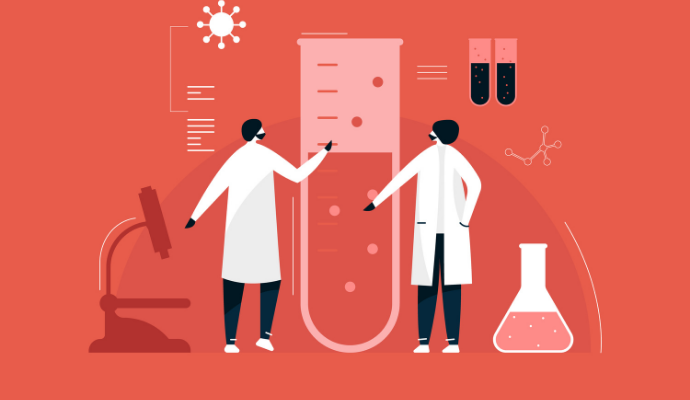Comparing Small Molecule and Biologics Drug Development Challenges
The development process for small molecule drugs and biologics is drastically different, presenting varying challenges for manufacturers, regulatory organizations, healthcare providers, and patients.

Source: Getty Images
- In recent years, pharmaceutical industry members have identified a boom in the biologic and biosimilar space. Although they only comprise a small part of the pharmaceutical industry, biological drug development protocols significantly differ from small molecule drug protocols. Comparing the two can provide insight into the challenges faced by healthcare industry members during drug discovery and development.
What Is a Small Molecule Drug?
Small molecule drugs are the most common medications in the pharmaceutical market. These compounds, ranging from 0.1 to 1.0 kDA, are created through chemical synthesis or derived from natural products produced by bacteria, fungi, and plants. Additional information from a publication in Chirality revealed that roughly 30% of small molecule drugs contain tailor-made or derived amino acids. These drugs use biochemical processes to treat or prevent diseases.
For example, many common over-the-counter medications, such as aspirin and diphenhydramine, are classified as small-molecule drugs. According to a press release by ResearchAndMarkets, small molecule drugs make up 90% of the pharmaceutical drug market. In 2020, 75% of all approved pharmaceuticals were small molecule medications.
Under the umbrella of small molecule medications, there are brand-name and generic drugs. Brand-name drugs are more expensive and less likely to be covered by insurance if a generic form is available. However, if the brand-name manufacturer has a patent or market exclusivity, a generic form won’t be available until that hold expires.
Throughout the years, the development and evolution of small molecule drugs have revolutionized healthcare, improving patient outcomes and acting as an easy tool to manage acute and chronic conditions.
READ MORE: Biosimilars Have Saved $12.6 Billion in the US between 2014 and 2022
Beyond improving patient care, the small molecule drug market generates enormous revenue for pharmaceutical manufacturers. For example, atorvastatin brought in nearly nine billion dollars annually in revenue for Pfizer during its patent life from 2003 to 2011. An analysis by Precedence Research estimates that by 2032 the global small molecule drug development market will be valued at $163.76 billion.
Many providers and researchers gravitate toward small molecule drugs because of their low molecular weight and simple chemical structures. Additionally, these drugs have predictable pharmacokinetic and pharmacodynamic properties, which makes dosing, introducing new medications, and predicting drug–drug interactions easier.
Additionally, patient compliance with small molecule drugs is relatively high, as they are stable, inexpensive, and readily available.
What Is a Biologic Drug?
Biologics and biosimilars have invaded the pharmaceutical industry in the past few years. These drug products are usually over 1 kDa in size. According to the FDA, biologic drugs are a diverse class of treatments that come in many forms, including vaccines, blood components, monoclonal antibodies, gene therapies, recombinant therapeutic proteins, interleukins, and more.
Although many industry members define biologics differently, these drugs comprise sugars, proteins, nucleic acids, cells, tissues, or some combination of those components. While these factors are always derived from a natural source, including humans, animals, or microorganisms, they can be extracted using biotechnology.
READ MORE: Biosimilars in the US Cost 2.74 Times More Than in Other Countries
While small molecule drugs illicit a general response, this treatment option is very target specific. As a result of their particular mechanisms, biologic products have more substantial pharmacological impacts but may be more challenging to use, as patients could have more pronounced side effects. For example, many biologic products have immunogenicity, which allows them to elicit an immune response.
In 2016, eight of the top ten global best-selling drugs were biologics, including AbbVie’s Humira, which generated over 17 billion USD.
Like the comparison between brand-name and generic drugs, biologic drugs have a cheaper analog, biosimilars. Biosimilars mimic the effects of a biologic product and may be more affordable than the branded version.
According to an analysis published by Vizient in 2022, biosimilars have saved the United States $12.6 billion between 2014 and 2022.
Biologic drugs continue to fill unmet clinical needs for patients and providers. Other FDA-approved biologic products include CAR T-cell therapy, antibody–drug conjugates, and drugs targeting inflammatory cytokines.
Small Molecule Drugs v. Biologics Drugs
READ MORE: Anticipating the 2023 Biosimilar Boom
Regardless of the kind of treatment being developed, the drug research and development process is a highly complex system with various moving parts. Both products require significant financial investment and may take years.
Small molecule drugs’ size, synthesis, and structure allow them to pass through cell membranes and reach their targets easily. Another advantage of these drugs is their easy administration methods. They can be conveniently formulated into pills, capsules, injectables, inhaled medicines, or suppositories.
According to University College London (UCL), the development process for small molecule drugs starts with therapeutic design and development. At this point, researchers identify an area of need before moving on to target identification and validation.
The identification process determines what molecule — whether an enzyme, receptor, or other component — may achieve the appropriate therapeutic effect. Additionally, researchers developing small molecule drugs will spend some time analyzing and validating these compounds before initiating preclinical research.
Once enough preclinical data has been collected, clinicians may begin clinical trials. Assuming the success of the clinical trial, pharmaceutical companies may submit their applications for regulatory approval. If approved, companies can begin manufacturing and start marketing the drug.
